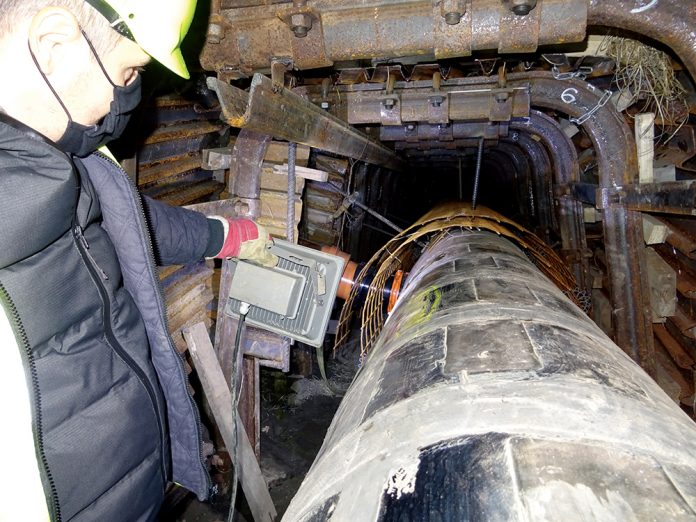By Robert Kostolány, Eutit Czech Republic
and Ray Moorehead, Greenbank UK
UK-based engineering company, the Greenbank Group, is drawing on the experience of its partner in the Czech Republic to provide a unique solution for the reconstruction UK sewer systems in the UK and Ireland. Over the last 25 years Greenbank’s partner Eutit has successfully developed and applied basalt tiling systems to the extent that they are now the preferred choice for many European utility companies looking to build new sewers or refurbish or repair existing ones.
Key to this success has been the development of oval or egg-shaped pipes made from basalt, one of the most resilient natural materials that offers a wide range of benefits when compared to more traditional materials such as concrete.
Development timeline
With a service life exceeding 100 years, basalt has been widely used in European sewer systems, but only for the bottom sections of ovoid ducts. The sides and tops were either bricks or specially cast concrete sections.This began to change in 1995, with the signing of the first contact between Eutit and Central European contractors and designers in wastewater handling. After consultations and design reviews in early 1996, the first basalt moulds were produced and the initial pieces were delivered for the construction of Slavojova street in Prague. The following year, the functionality of the fitted troughs was verified, evaluated and approved for use on future projects.
Basalt designs now come in a range of shapes such as full oval, round and rectangular or specials produced to suit the given operating conditions. Prague’s sewers are mainly constructed using an ovoid profile and today the bottom sections are fitted with basalt and the upper arch with materials that can withstand strong chemical stresses (chemically resistant bricks). Therefore, any new sewer designs in this profile must be equally resistant.
Thanks to further research and development by Eutit, one piece ovoid’s fully cast in basalt have become an attractive alternative to the labour-intensive brick laying method. Basalt can be cast in thinner more handleable sections, reducing installation times with significantly lower overall project costs.
Other materials used for construction of ovoid-profile sewers lack abrasion resistance and time-tested durability of basalt rather than the theoretical claims made for alternatives.
From 1996, Eutit improved on the original 600/1100 designs from 1996 to produce full basalt lining systems and manufactured the shaped tiles within a tolerance to enable watertight bonding of the required pipe.
Ovoid-shaped pipe production technology
To produce the 600/1100 basalt pipes, 35 mm thick tiles are used and designed so that there are no continuous longitudinal joints in the entire profile. After casting, the tiles are ground with modern diamond tools to a precise shape then bonded together on a template to form a 360° profile, with each row being 330 mm long. These are then bonded together to the required length, with the joints between individual segments sealed using fiberglass tape with epoxy.
The connection of the individual pipes is anchored to one end of the pipe with a rubber seal at the other end. Bends are made by bonding segments shortened to the required angle.
All that remained was to verify the functionality of basalt in practice. The first project to utilise basalt segments was the renovation of the sewer in Rásnovka street Prague. The Project leader was PVK and the design company Ko-ka, with Eutit supplying the basalt.
Conclusion
The final construction of this project is due for completion at the end of 2021, however, it can confidently be said that the development from part use to full-profile cast basalt pipework is already proving a success. Due to the basalt pipes being easier to handle the project has resulted in real cost savings during the installation process and their abrasive resistant properties will significantly extend the effective lifespan of the sewer.
The moulds for other profiles of the Prague Standard ovoid shapes, e.g. PN V, are already set for use on other projects across central Europe and can easily be adapted for UK clients.
The combination of correct material choice, a well-prepared project and, most importantly, an experienced installation company produced a finished result that complements the legacy left to the city of Prague by an English genius named William H Lindley who designed the city of Prague’s original sewers in the late 1800’s and early 1900’s.




